What would you see in a black hole?
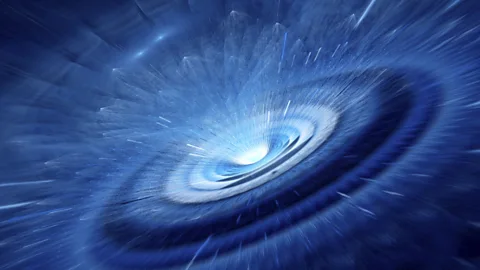 Getty Images
Getty ImagesWhat would it be like to fly a spacecraft into a black hole? Marcus Woo investigates.
Something about a black hole just pulls you in. Sure, its gravity is so strong that not even light can elude its grasp. But, there's something else, something harder to pinpoint. Maybe it's a black hole's absolute darkness, a mysterious, infinite chasm that dares you – or even compels you – to venture closer.
A trip into a black hole is a one-way journey. Once you cross the event horizon – the point at which light can't escape – there's no turning back. Most likely, you'd die a violent death. If you're not deterred, let's at least explore what we might see if we were to visit one.
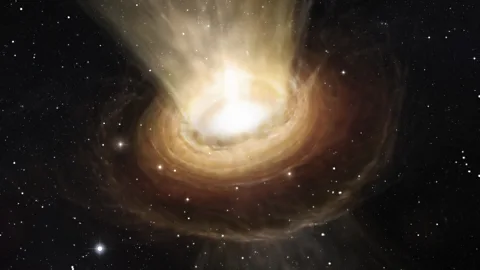 Science Picture Library
Science Picture LibraryWhen a massive star exhausts its fuel, it collapses under its own weight and implodes into a black hole. Only stars with enough heft – those maybe about 25 times more massive than our Sun – will create one. About one out of every thousand stars in the galaxy is massive enough to make a black hole. The Milky Way has at least 100 billion stars, which means about 100 million black holes are lurking out there in the galaxy. But , space is big. Even if you're travelling at the speed of light, the nearest black hole will still take a few thousand years to reach.
But let's say you master interstellar travel, whether via warp drive or wormholes, and you reach one of these black holes. What will you see?
Circling the drain
Well, nothing really. A lone black hole is, unsurprisingly, black. If you circle around it, you'll notice that it's spherical, unlike those flat, Acme portable holes in Road Runner cartoons. And if it's spinning – which is likely, as most things in the universe rotate to some degree – then the black hole will be wider around the middle, rather than a perfect circle.
For a more dramatic view, though, zip on over to the Milky Way's centre, the home of a supermassive black hole nearly four million times more massive than the Sun. The black hole's gravity has gathered lots of gas and dust, which has accumulated into a disc that's spiralling into the hole – circling the drain, so to speak. As the material gets consumed, friction heats it up to billions of degrees, producing lots of radiation, and outflows of energy and charged particles.
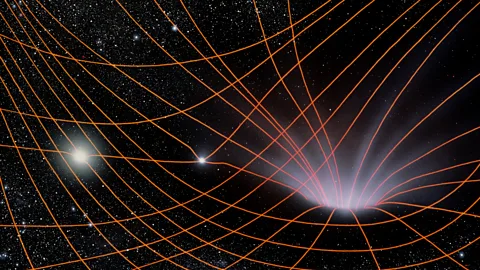 Science Picture Library
Science Picture LibraryThe hot disc would be quite a sight. As for the black hole itself, you wouldn't be able to see it directly, as it's enshrouded in gas and dust. But, you can see how the black hole's gravity bends and warps rays of light around it, creating a visual imprint in the surrounding material called the black hole's shadow. The gravity warps the image of the shadow itself, making it appear about five times bigger than the black hole.
Normally, we think of light travelling in straight beams – photons zooming inexorably forward. But near a black hole, the powerful gravity tugs on photons, swinging them around the hole into orbits. Some of those photons manage to escape and reach your eyes (or telescope), and what you'd see is a bright ring bordering the shadow.
Meanwhile, the inner part of the disc of material swirls around the black hole at speeds approaching that of light. According to Einstein's theory of relativity, a light source will appear brighter if it's hurtling toward you. If you're looking at the black hole such that the disc is somewhat edge-on, the part of the disc that's moving toward you will glow much brighter, producing a bright crescent on that side of the black hole.
Bright and clear
So while you can't see the black hole directly, you'd see its shadow, surrounded by a bright ring and crescent. Some researchers worried that some of the gas, dust, and charged particles spewing out of the disc might obscure this dramatic image. To envision exactly what the black hole's shadow would look like, researchers created some of the most accurate computer simulations yet that incorporate all the physics of the gas and gravity around the black hole.
It turns out that the view would remain bright and clear, says Feryal Ozel, an astrophysicist at the University of Arizona who helped produce the simulations. They make for some cool movies but more importantly, they help astronomers anticipate what they will see when they observe the shadow of the Milky Way's black hole for real.
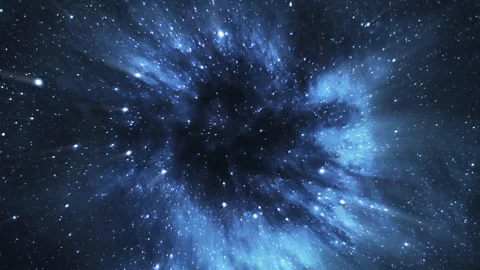 Getty Images
Getty ImagesBy combining the powers of up to 11 existing telescopes around the world, astronomers are creating one huge, Earth-sized instrument to actually see, for the first time, the black hole's shadow and its characteristic crescent and ring. "That's my hope and dream, that we'll see a ring that’s brighter on one side than the other," Ozel says.
This planet-sized telescope, called the Event Horizon Telescope, will include instruments from the South Pole to Chile, using supercomputers to process the vast chunks of data. "That gives us a higher level of magnification of any telescope that's ever been built," says Shep Doeleman, an astronomer at the Massachusetts Institute of Technology (MIT) who's leading the EHT project. Resolving the black hole's shadow from Earth is equivalent to spotting a grapefruit on the Moon, he says.
This spring, the researchers got seven telescopes hooked up and ready to go. By 2017, he hopes to have all of them set up, and people will be able to directly see a black hole. Indeed, getting an image is groundbreaking, he says, and it'll offer the strongest proof yet that black holes do exist (all evidence so far has been indirect, for example based on a black hole's gravitational influence of nearby stars at the galactic centre). Physicists will also be able to make the most detailed observations ever on what goes on around a black hole, allowing them to test the intricate details of Einstein's theory of gravity.
But maybe simply a view isn't enough, and you still want to go inside the black hole. Unfortunately, physicists aren't quite sure what will happen. The conventional hypothesis is that you'd get spaghettified. If you leap into the black hole feet first, your feet will feel stronger gravity than your head. As you approach the hole, the difference in gravity at your feet and your head gets bigger and bigger until you're ripped apart. Soon, this tidal gravity, as it's called, will tear every cell, molecule, and atom in your body into smithereens.
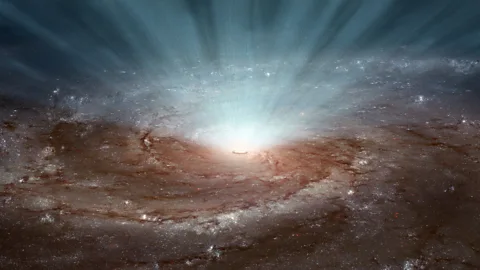 Science Picture Library
Science Picture LibraryAccording to the maths, if the black hole is relatively small – a few tens of the mass of the sun – then, spaghettification will happen long before you cross the event horizon, the point at which light can no longer escape the black hole's gravity. If the black hole is enormous, several billion times the mass of the Sun, then you would cross the event horizon just fine. Spaghettification awaits later.
But in 2012, while trying to understand whether information disappears into a black hole forever, John Polchinski and other physicists realised another fate was possible. According to quantum mechanics, they say, the event horizon becomes a giant wall of fire that incinerates you once you cross it. You don't even get the chance of being spaghettified.
Many physicists didn't like this idea. According to one tenet of Einstein's relativity, a person falling through the event horizon shouldn't feel anything different, just floating in space. A firewall, then, would violate the “equivalence principle”, a venerable rule that physicists would be loath to discard so easily. They have thus tried idea after idea to resolve what's become known as the firewall paradox. No one's agreed on anything just yet.
To find out once and for all what happens inside a black hole, you might simply have to go inside one. The problem is you won't then be able to tell anyone what you’ve seen.
